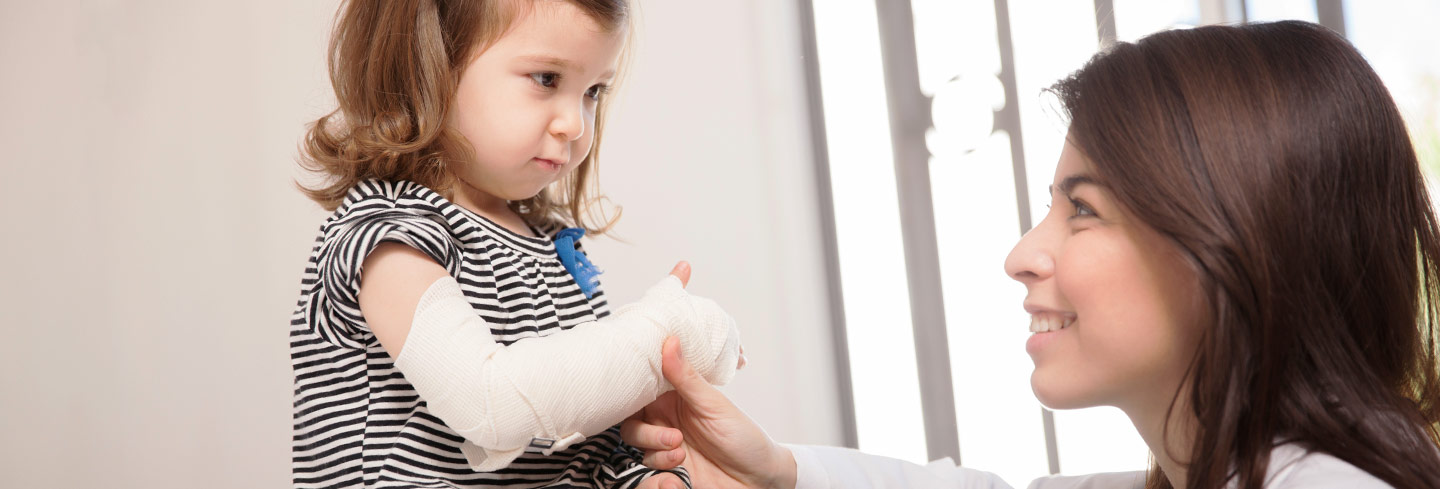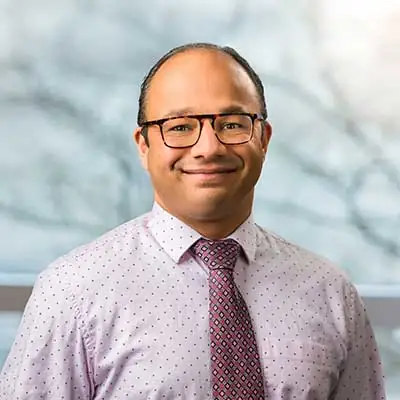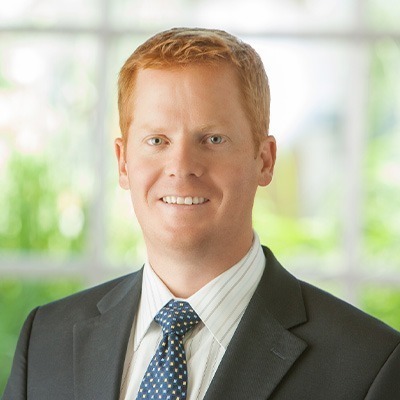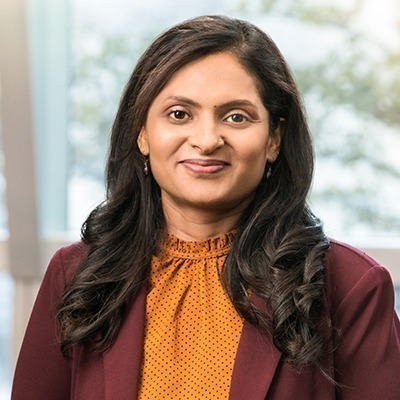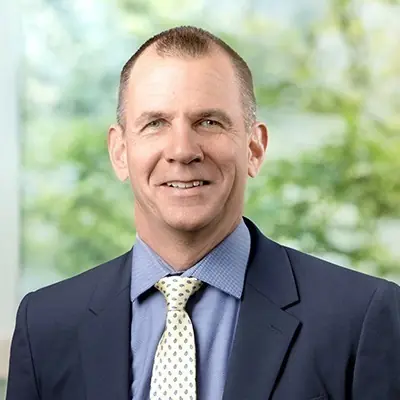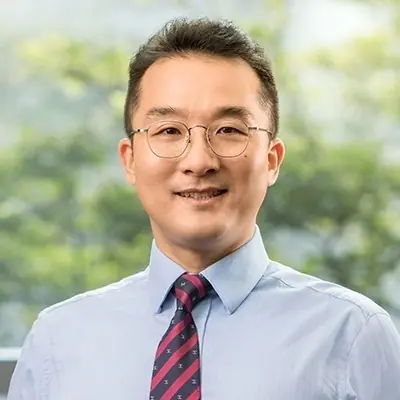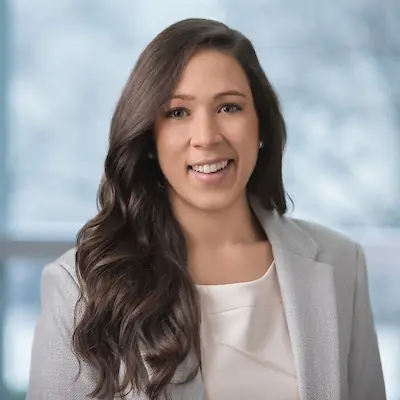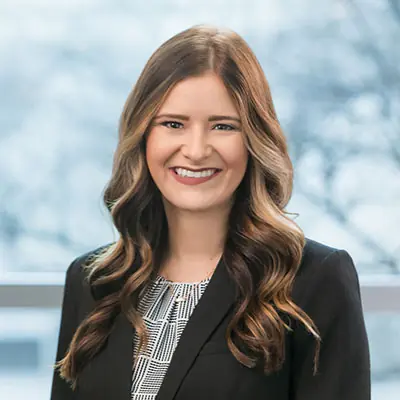Orthopedic conditions refer to issues dealing with limbs and the spine. This can mean anything from a sprained wrist to a lifelong neurological disorder like cerebral palsy.
At Children’s Nebraska, we know that it doesn’t matter if the condition is mild or severe, temporary or permanent — our top goal is to help your child move without pain or difficulty.
Children’s orthopedic providers evaluate and treat disorders of the bones, joints, muscles, ligaments, and tendons. These are part of the skeletal system or musculoskeletal system. We see patients in all stages of childhood, from right after they’re born, through the teenage years.
Make An Appointment
Children’s Orthopedic Clinic Hours
Omaha: 8 a.m. – 4:30 p.m.
Lincoln: 8:30 a.m. – noon
Kearney: Tuesdays 8 a.m. – 4:30 p.m.; Fridays 8 – Noon
Phone 402-955-6300 | Fax 402-955-6529
Our Specialists
What Sets Children’s Apart?
Our providers receive subspecialty training and adopt the latest technologies to provide the best care to children and adolescents. We take a team-based approach to care, collaborating with providers across many specialties to offer the full spectrum of care for even the most complex conditions.
Children’s uses the most advanced imaging techniques to accurately see and understand conditions. We are the only hospital in Nebraska offering EOS imaging – a type of X-ray that uses 50 to 80% less radiation than a standard X-ray.
Orthopedic Clinics
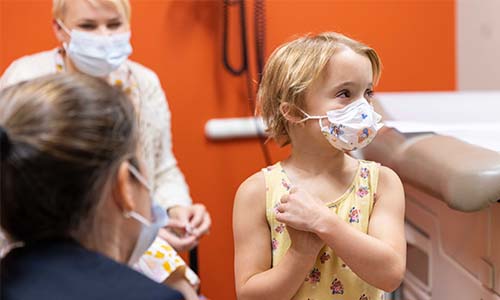
Metabolic Bone Disease
Children’s comprehensive Osteogenesis Imperfecta (OI) Clinic includes specialists from multiple disciplines to address the full spectrum of care for children living with OI.
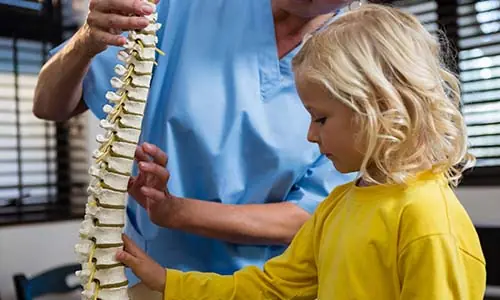
Spine Deformity
For children with abnormal spine curvature, such as too little curvature (flatback syndrome) or sideways curvature (scoliosis).
Hip Preservation
For children with a wide range of hip conditions. The program aims to alleviate pain or limitations in movement while preserving the natural hip to avoid the need for surgery or hip replacement.
Cerebral Palsy
For children with cerebral palsy, a group of disorders that involve challenges with movement.
Myelomeningocele
For children with a myelomeningocele — a type of spina bifida involving a birth defect in the backbone and spinal canal.
Neuromuscular Disease
For children with diseases that affect both the nervous and muscular systems, which causes weakened muscles.
Clubfoot
For children with a birth defect that causes their foot to turn inward.
Research Combined With Patient Care
Our providers don’t just treat patients — they also contribute to pediatric orthopedic research. That means they are committed to discovering new treatments, determining which medical practices are actually working, and exchanging ideas about best practices with other experts in the field.
Our providers are currently conducting and participating in research and trials involving:
- Orthopedic trauma
- Osteogenesis imperfecta, a disease where bones are brittle and can break easily
- Outcomes of patients who have had spinal surgeries
- The correlation between stems cells, aging, and health
Conditions We Treat
The orthopedic care team at Children’s diagnoses and treats a variety of orthopedic conditions, including:
-
Anterior Cruciate Ligament (ACL) Injuries
The ACL is the ligament that connects the thigh bone and shin bone inside the knee joint, keeping the knee stable. While ACL tears can be the result of a direct hit to the knee, they more commonly occur through movements like pivoting or quickly stopping and changing direction while running. -
Cerebral Palsy
Brain damage or malformation that causes either impairment or total loss of motor function. The brain damage can occur before, during, or right after a child is born. A child with cerebral palsy may have difficulty controlling muscles, body movement, reflexes, balance, or posture. Cerebral palsy can also cause issues with seeing, hearing, thinking, and learning. -
Clubfoot
Clubfoot is when one or both feet are turned inward. In severe cases, the bottom of the foot may face sideways or upward. Clubfoot is a very common birth defect, affecting about 1 in every 1,000 infants. Most cases can be treated successfully without surgery. -
Complex Foot Deformities
When the foot does not develop correctly and becomes misshapen. A deformity may be considered complex if it is due to a different problem, such as a trauma or a neurological disorder. -
Dwarfing Conditions
A condition that causes short stature (height). Once they reach adulthood, children with dwarfism will be under 4’10”. There are more than 300 different conditions that can cause dwarfism. The most common is achondroplasia, a genetic condition that makes the arms and legs short in comparison to the head and trunk. It can also cause weak muscle tone and a larger head. -
Fractures
This is another name for broken bones. If the bone breaks through the skin, it is called an open or compound fracture. If the bone does not break through the skin, and there is no open wound, it is called a “closed” fracture. Treating pediatric fractures is essential to avoiding problems later in life. -
Hip Dysplasia
When the hip joint is loose or unstable. This is a common birth defect — 1 in 10 babies are born with hip instability, and 1 in 100 babies are treated for hip dysplasia. Most cases can be corrected, allowing children to walk and play normally as they grow. -
Leg Length Discrepancy
When legs grow to different lengths and may cause a child to have difficulty crawling or walking. We also treat other congenital (present at birth) problems of the legs and arms. -
Meniscus Injuries
Meniscus is cartilage in the knee that absorbs shock and acts as a cushion. Injuries and conditions that affect the meniscus include:- Tears: A torn meniscus can cause pain, swelling, or limited range of knee motion.
- Discoid Meniscus: The meniscus is thicker than usual, and may be round rather than crescent-shaped. Children with this condition may be at a greater risk for knee injuries.
-
Myelomeningocele
A neural tube defect. During the first month of pregnancy, the two sides of the spine (backbone) are supposed to join together, covering the spinal cord. Together, the developing spine and brain are called the “neural tube.”Myelomeningocele is a defect where the bones of the spine do not form completely, and the neural tube cannot be closed. This causes the spinal cord to stick out of a child’s back.
Children with myelomeningocele may develop orthopedic problems, such as scoliosis, dislocations, joint tightness, difficulty walking, or foot and ankle deformities.
-
Neuromuscular Disease
When the nervous system weakens the muscular system, causing a child to have difficulty with everyday activities, such as walking, running, or getting dressed. It can sometimes affect the heart, causing difficulty breathing.There are several types of neuromuscular diseases, including:
- Muscular dystrophy: Defects in a child’s genes cause weakened muscles or muscle loss. There are more than 30 types of muscular dystrophy.
- Spinal muscular atrophy: When the nerves in the spinal cord are destroyed, causing difficulty with walking, swallowing, speaking, and breathing.
-
Osteogenesis Imperfecta
Osteogenesis Imperfecta is a genetic defect that affects a child’s ability to grow strong bones. In children with osteogenesis imperfecta, the bones become brittle and can break easily. We also treat other bone disorders, such as bone deformities. -
Overuse Injuries
Damage to a bone, muscle, ligament, or tendon caused by repetitive stress without allowing time for the body to heal. Shin splints, tendonitis, and stress fractures are examples of common overuse injuries. These typically develop over time. Children often change their posture and how they move to compensate for the pain. -
Perthes Disease In The Hip
When there is a disruption in blood supply to the top of the femur (thighbone), causing the bone cells to die. Eventually, the weakened bone in the femur breaks apart. The disruption is only temporary — when normal blood flow returns, the bone begins to grow back.Children with Perthes disease may have a limp; limited motion; or pain in the hip, thigh, groin, or knee.
In most cases, Perthes disease can be treated, allowing children to return to daily activities.
-
Scoliosis
When the spine (backbone) is curved, often in an S- or C-shape. Children may appear to lean to one side or have uneven hips and shoulders. We also treat other spine abnormalities, such as spina bifida, a birth defect affecting the spinal cord and lower back. -
Slipped Capital Femoral Epiphysis
When the ball at the top of the femur (thighbone) slips backward off of the bone. This can cause stiffness, instability, and pain in the hip. It usually occurs in preteen and teenage boys who are still growing.If treated early, children with slipped capital femoral epiphysis can expect to have good, long-term hip function.
-
Sports Injuries
Injuries that occur while a child is playing sports or exercising. These injuries can be caused by overuse, or by a sudden injury, such as a fall. The most common types of injuries include:- Sprains (stretched or torn ligaments) and strains (stretched or torn muscles or tendons)
- Fractures (broken bones)
- Dislocations (joint injuries that cause the ends of a bone to move out of their normal position)
- Knee injuries
- Rotator cuff injuries
- Achilles tendon injuries
- Swollen muscles
- Pain along the shin bone
-
Other Conditions We Treat
- Back Pain
- Bone, Joint, and Muscle Infections
- Bowed Legs
- Childhood Obesity-Related Conditions
- Congenital Hand Conditions
- Flexible Flat Foot
- Ganglion Cysts
- Intoeing
- Kyphosis
- Limping
- Non-Ossifying Fibroma
- Nursemaid’s Elbow
- Osteochondritis Dissecans
- Osteochondroma
- Snapping Hip
- Spondylolisthesis and Spondylolysis
- Tarsal Coalition
- Toe Walking
- Vertical Talus
Our Treatments
Our specialists provide a wide variety of treatments for the many orthopedic conditions we see. Some of our specialties include:
-
Minimal Incision Realignment And Stabilization For Severe Bone Deformities
If bones are deformed, we can put them in the correct position, and make sure they are stable enough to function.We aim to use few small incisions, rather than large incisions. This allows children to recover faster, spend less time in the hospital, and have fewer scars.
-
Magnetic Spine Lengthening For Infantile Scoliosis (MAGEC)
Scoliosis is a curvature of the spine, usually in an S- or C- shape. When it is diagnosed in children under 3 years of age, it is considered “infantile.” If scoliosis can’t be treated with a conservative method, such as a back brace, children with infantile scoliosis may need surgery.Surgery often involves implanting rods into the back, which helps straighten the curve. However, as a child grows, the rods need to be lengthened.
Until recently, that meant multiple surgeries. Now, the new MAGEC system allows us to implant magnetically-controlled self-lengthening rods. This means children only need one surgery to place the rods. Then, as they grow, surgeons can use a magnetic device to lengthen the rods — without having to make additional incisions or put children under anesthesia.
-
Magnetic Internal Lengthening For Leg Length Discrepancy
Leg length discrepancy occurs when one leg is longer than the other. Traditionally, leg length discrepancy has been treated with external fixation. This means a device is attached to the bone with wires and pins, and a frame of bars or rings attaches to these wires and pins, keeping the leg stable. Then, the frame is adjusted, pulling the pins — and the bones they’re attached to — away from one another, lengthening the leg.While this method is successful, it’s not always ideal. There can be problems, such as infections, broken materials, scarring, or joint stiffness.
At Children’s, we offer an alternative called “magnetic internal lengthening.” The lengthening device is placed directly inside the bone, rather than around it. A remote control and magnet are used to gradually pull the bones apart, lengthening the leg and avoiding complications associated with external fixation.
-
Ponseti Method For Clubfoot Treatment
Clubfoot is a condition where one or both feet are curved inward. The Ponseti Method is the most commonly used treatment and is effective in about 95% of cases of clubfoot.There are three main elements of the Ponseti Method:
- Manipulation and casting: The foot is gently stretched and placed into the correct position. It is held in place by a cast. This process is repeated every week until the foot is largely improved. Typically, this phase takes about 6 to 8 weeks.
- Achilles tenotomy: A minor procedure to release tightness in the Achilles tendon (heel). The procedure involves making a tiny cut to the tendon, and placing a new cast over the tendon until it heals. After about 4 weeks, the cast is removed. The Achilles tendon will have regrown to the correct length, and there will be no more signs of clubfoot.
- Bracing: A brace keeps the foot at the correct angle. Since clubfoot can recur, bracing ensures that the foot stays in the correct position permanently. The bracing phase can be challenging, as it may take up to 5 years. However, it is essential to keep up with the physician’s instructions — if a brace isn’t worn as prescribed, clubfoot can recur.
-
Vertical Expandable Prosthetic Titanium Rib (VEPTR) For Congenital Scoliosis
In some cases, scoliosis can cause thoracic insufficiency syndrome (TIS). Children with TIS are not able to have normal breathing or lung growth.VEPTR is a surgical procedure used in young children with congenital scoliosis (scoliosis that is present at birth). The procedure involves implanting a device that expands the chest and straightens the spine. As a child grows, the device needs to be expanded twice a year. These expansions are done through small incisions and are usually done on an outpatient basis, so children can go home on the same day.
Children’s is one of only a few institutions in the country to offer VEPTR treatment.
-
The Schroth Method: Physiotherapeutic Scoliosis-Specific Exercise (PSSE)
PSSE uses a conservative, exercise-approach to care for children and adolescents with scoliosis. Patients work with our orthopedic providers and a specially trained physical therapist for a functional, non-operative method of care.
Pediatric Orthopedics in Lincoln and Kearney, Nebraska
To schedule an appointment, call 402-955-6300
Conditions treated include:
- Scoliosis/kyphosis
- Leg length discrepancy
- Hip dysplasia
- Gait abnormalities (in-toeing, out-toeing, toe walking)
- Limb deformities (genu varum, genu valgum)
- Flat feet, extremity pain
- Back pain
- Fractures
- Sprains
- Overuse pain or injuries (osgood-schlatter)
- Perthes disease
- Cerebral palsy/myelomeningocele
What To Do Next
For Patients
Make An Appointment
Patients do not need a referral to see one of our orthopedic specialists. Call 402-955-6300 to make an appointment for your child.
Our specialists will see any child, regardless of their ability to pay. Your child does not need insurance to make an appointment. However, if your child does have insurance, please bring the insurance card to the appointment.
What To Bring To The First Appointment
Please bring any new patient paperwork, imaging results (X-ray, MRI, CT, etc.), and previous medical records for the condition being treated and any related conditions.
For Referring Providers
The Physicians’ Priority Line is your 24-hour link to pediatric specialists at Children’s for emergency and urgent consults, physician-to-physician consults, admissions, and transport services. Call 855-850-KIDS (5437).
Learn more about referring patients.
